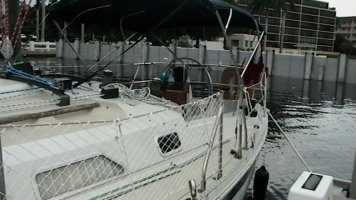Re: Bubbles in Bristol Finish
Without actually seeing the issues, I can't say for sure exactly what's causing the bubbles, however, I can offer a few suggestions. First of all, are you sure they are actual bubbles and not airborne contaminants that settle? It is very typical to get some bubbles, but most will go away as the finish settles. Good brushing practices should limit the amount of bubbles. First off, be sure to only brush in one direction, never back and forth. And always brush towards the wet edge. Secondly, use a slow steady long stroke whenever possible rather than short choppy strokes. Too fast a stroke will create more bubbles. But again, most bubbles should flatten out on their own. We sometimes actually roll on Bristol which leaves thousands of bubbles, but then tip it out lightly (and slowly) with a good quality badger hair brush, for a bubble-free coat. I recommend a good quality brush rather than a foam brush, which can add to the bubble problem.
If you are working outdoors, you will probably get a little air movement, which is good. Air movement is also helpful in removing bubbles. Indoors use a fan to move the air around a little, but not directly on the work. This helps drying too. I'm sure you know to lightly stir, not shake the varnish/Bristol in the can. Some bubbles are caused by a stirring up of the molecules during the brushing process, but other types of bubbles are caused by out-gassing in the wood. In situations where the wood substrate is cold, then brought into a warmer area for finishing, or if the boat's wood has cooled from the night and you lay on a finishing material while the wood starts to heat up for the day, out-gassing bubbles will definitely occur due to the expansion of the wood. If you are working inside, under normal temps, or outside without major temp variations out of direct sunlight, that is probably not your issue. But I'm not certain those are the kind of bubbles you are getting. What you might actually see is minute particles of dust that have settled into the finish. And that's a whole nother issue that I can talk about for hours.
One last thing, before you apply the final coat be sure to give each piece a very aggressive 220-grit sanding (using a sanding block) to flatten the surface as much as possible. For the smoothest finish, it is best to sand between most coats (even though the manufacturer tells you it's not necessary), but this will require a few extra coats to make sure the mil thickness in the end is what it needs to be to stand up to UV rays for a few seasons. Don't attempt to sand without giving the previous coat more than a couple days to cure. And don't ever sand in the same area in which you will be applying the finish (if inside). After sanding, brush off the surface, vacuum the surface, then use a rag dampened (not saturated) with MEK or acetone to wipe the surface clean. Wipe in long strokes in one direction. Wiping back and forth or in circles only moves any loose particles around and can soften the surface too much. Finally, use a tack cloth to lightly wipe the surface just before you brush on any varnish.
Hope this helps. If not, please feel free to email me with more questions.
Doug


